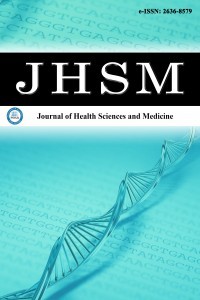1.
Park S, Park SH, Kim Y, et al. Optimal nutritional support strategy based on the association between modified NUTRIC score and 28-day mortality in critically ill patients: a prospective study. Nutrients. 2023;15(11):2465. doi:10.3390/nu15112465
2.
Chada RR, Chidrawar S, Goud BA, Maska A, Medanki R, Nagalla B. Association between nutrition delivery, modified nutrition risk in critically III score, and 28-day mortality. Nutr Clin Pract. 2021;36(5): 1020-1033. doi:10.1002/ncp.10673
3.
Blaauw L, Schoonees A, Robertson N, Visser J. The impact of guideline recommended protein intake on mortality and length of intensive care unit and hospital stay in critically ill adults: a systematic review. Clin Nutr ESPEN. 2024;61:356-368. doi:10.1016/j.clnesp.2024.04.003
4.
Bhasin A, Huang L, Shieh MS, Pekow P, Lindenauer PK, Lagu T. Malnutrition in hospitalized adults in the United States, 2016-2019. J Hosp Med. 2024;19(12):1113-1121. doi:10.1002/jhm.13456
5.
Pellathy TP, Pinsky MR, Hravnak M. Intensive care unit scoring systems. Crit Care Nurs. 2021;41(4):54-64. doi:10.4037/ccn2021613
6.
Shahi S, Paneru H, Ojha R, Karn R, Rajbhandari R, Gajurel BP. SOFA and APACHE II scoring systems for predicting outcome of neurological patients admitted in a tertiary hospital intensive care unit. Ann Med Surg (Lond). 2024;86(4):1895-1900. doi:10.1097/MS9.0000000000001734
7.
Evran T, Serin S, Gürses E, Sungurtekin H. Various scoring systems for predicting mortality in intensive care unit. Niger J Clin Pract. 2016;19(4): 530-534. doi:10.4103/1119-3077.183307
8.
Akavipat P, Thinkhamrop J, Thinkhamrop B, Sriraj W. Acute physiology and chronic health evaluation (APACHE) II score - the clinical predictor in neurosurgical intensive care unit. Acta Clin Croat. 2019;58(1):50-56. doi:10.20471/acc.2019.58.01.07
9.
Hany A, Elsenousy T, Abd Elrahman A, Nabil S. Nurses’ performance in using the APACHE score: Its effect on outcomes of patients with cardiac surgery. J Med Life. 2023;16(7):1070-1078. doi:10.25122/jml-2023-0059
10.
Oda S, Hirasawa H, Sugai T, et al. Comparison of sepsis-related organ failure assessment (SOFA) score and CIS (cellular injury score) for scoring of severity for patients with multiple organ dysfunction syndrome (MODS). Int Care Med. 2000;26(12):1786-1793. doi:10.1007/s001340000710
11.
Hansen CK, Issa M, Balaji L, Du A, Grossestreuer AV, Donnino M. Performance of the APACHE II and SOFA scores in diabetic ketoacidosis. J Int Care Med. 2022;37(6):715-720. doi:10.1177/08850666211023718
12.
Heyland DK, Dhaliwal R, Jiang X, Day AG. Identifying critically ill patients who benefit the most from nutrition therapy: the development and initial validation of a novel risk assessment tool. Crit Care. 2011; 15(6):R268. doi:10.1186/cc10546
13.
Rahman A, Hasan RM, Agarwala R, Martin C, Day AG, Heyland DK. Identifying critically-ill patients who will benefit most from nutritional therapy: further validation of the “modified NUTRIC” nutritional risk assessment tool. Clin Nutr. 2016;35(1):158-162. doi:10.1016/j.clnu.2015. 01.015
14.
Zhang P, Bian Y, Tang Z, Wang F. Use of nutrition risk in critically Ill (NUTRIC) scoring system for nutrition risk assessment and prognosis prediction in critically ill neurological patients: a prospective observational study. J Parenter Enteral Nutr. 2021;45(5):1032-1041. doi: 10.1002/jpen.1977
15.
Barea-Mendoza JA, Llompart-Pou JA, Pérez-Bárcena J, et al. External validation of the Glasgow Coma Scale-Pupils in patients with severe head injury. Validación externa de la Escala de Coma de Glasgow con valoración pupilar en pacientes con traumatismo craneoencefálico grave. Emergencias. 2023;35(1):39-43. doi:10.55633/s3me/E097.2023
16.
Knaus WA, Zimmerman JE, Wagner DP, Draper EA, Lawrence DE. APACHE-acute physiology and chronic health evaluation: a physiologically based classification system. Crit Care Med. 1981;9(8):591-597. doi:10.1097/00003246-198108000-00008
17.
Peres Bota D, Melot C, Lopes Ferreira F, Nguyen Ba V, Vincent JL. The multiple organ dysfunction score (MODS) versus the sequential organ failure assessment (SOFA) score in outcome prediction. Intensive Care Med. 2002;28(11):1619-1624. doi:10.1007/s00134-002-1491-3
18.
Singer P, Blaser AR, Berger MM, et al. ESPEN practical and partially revised guideline: Clinical nutrition in the intensive care unit. Clin Nutr. 2023;42(9):1671-1689. doi:10.1016/j.clnu.2023.07.011
19.
Kumar S, Gattani SC, Baheti AH, Dubey A. Comparison of the performance of APACHE II, SOFA, and mNUTRIC scoring systems in critically Ill patients: a 2-year cross-sectional Study. Indian J Crit Care Med. 2020;24(11):1057-1061. doi:10.5005/jp-journals-10071-23549
20.
Hai PD, Viet Hoa LT. The prognostic accuracy evaluation of mNUTRIC, APACHE II, SOFA, and SAPS 2 scores for mortality prediction in patients with sepsis. Crit Care Res Pract. 2022;2022:4666594. doi:10. 1155/2022/4666594
21.
Kalaiselvan MS, Renuka MK, Arunkumar AS. Use of nutrition risk in critically ill (NUTRIC) score to assess nutritional risk in mechanically ventilated patients: a prospective observational study. Indian J Crit Care Med. 2017;21(5):253-256. doi:10.4103/ijccm.IJCCM_24_17
22.
Mukhopadhyay A, Henry J, Ong V, et al. Association of modified NUTRIC score with 28-day mortality in critically ill patients. Clin Nutr. 2017;36(4):1143-1148. doi:10.1016/j.clnu.2016.08.004
23.
Wang N, Wang MP, Jiang L, Du B, Zhu B, Xi XM. Association between the modified nutrition risk in critically ill (mNUTRIC) score and clinical outcomes in the intensive care unit: a secondary analysis of a large prospective observational study. BMC Anesthesiol. 2021;21(1):220. doi:10.1186/s12871-021-01439-x
24.
Verma P, Kumar S, Phate N, et al. Modified nutrition risk in critically ill (m-NUTRIC) score to assess nutritional status and outcome in patients with chronic kidney disease: 2-year cross-sectional study. Int J Nutr Pharmacol Neurol Dis. 2023;13(3):152-157. doi:10.4103/ijnpnd.ijnpnd_9_23
25.
Mahmoodpoor A, Sanaie S, Sarfaraz T, et al. Prognostic values of modified NUTRIC score to assess outcomes in critically ill patients admitted to the intensive care units: prospective observational study. BMC Anesthesiol. 2023;23(1):131. doi:10.1186/s12871-023-02086-0
26.
Mendes R, Policarpo S, Fortuna P, et al. Nutritional risk assessment and cultural validation of the modified NUTRIC score in critically ill patients-A multicenter prospective cohort study. J Crit Care. 2017;37:45-49. doi:10.1016/j.jcrc.2016.08.001
27.
de Vries MC, Koekkoek WK, Opdam MH, van Blokland D, van Zanten AR. Nutritional assessment of critically ill patients: validation of the modified NUTRIC score. Eur J Clin Nutr. 2018;72(3):428-435. doi:10. 1038/s41430-017-0008-7
28.
Chourdakis M, Grammatikopoulou MG, Day AG, Bouras E, Heyland DK. Are all low-NUTRIC-score patients the same? Analysis of a multi-center observational study to determine the relationship between nutrition intake and outcome. Clin Nutr. 2019;38(6):2783-2789. doi:10.1016/j.clnu.2018.12.006

